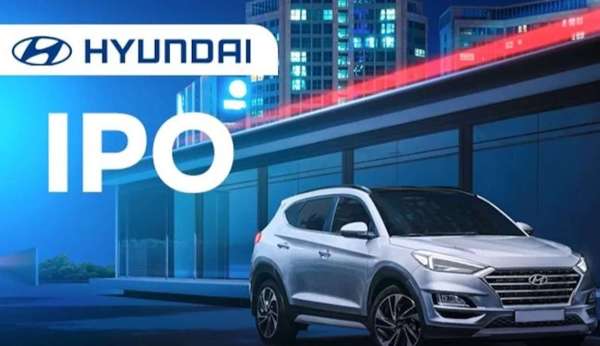
Hyundai IPO: The initial public offering (IPO) of Hyundai Motor India was met with a low level of subscription from retail investors for issues above Rs 10,000 crore, notwithstanding the early excitement around the company.

The main factors that discouraged private investors from participating in the massive IPO, according to analysts, were a purported last-minute rise in the price range and a number of “red flags” that were brought to light before to the launch.
Hyundai India concluded its biggest initial public offering (IPO) on Thursday. Bids for 2.37 times the number of shares on sale were received by the business.
But the only people driving this were qualified institutional buyers (QIBs). Only 50% and 60% of the shares designated for retail and non-institutional investors, respectively, were subscribed by these investors.
Prior to the IPO’s completion, rumors circulated that the corporation intended to raise Rs 25,000 crore. The business intends to raise Rs 27,870 crore at the top end of the pricing range of Rs 1,865-1,960 per share, according to the final calculations.
Given the past and present of these significant challenges, they ought to have left something for investors to consider. They may have gotten strong support even if they had left that 12% on the table, according to independent market expert Ambareesh Baliga.
For example, when Coal India went public in 2010, it offered individual investors a 5% discount. In addition, LIC offered its policyholders a discount of more than 6% and retail investors a discount of 5% for its 2022 IPO.
On the last day of the IPO, Hyundai India’s shares dropped to zero from where they had been trading on the grey market at a premium of Rs 380 per share at the beginning of the month. The feeble reaction was partly caused by the general dismal market circumstances, as major indexes have dropped by about 4% this month.
“The retail and the HMI subscription were below par due to a combination of market conditions and aggressive pricing in the face of an apparent slowdown in sales,” said Deepak Jasani, HDFC Securities’ head of retail research.
Although the gray market premium undoubtedly had a significant influence, Baliga noted that there were enough conversations about the problem in print and digital media that raised a lot of warning lights.
Experts have called attention to a number of difficulties, such as Hyundai India’s declining market share and Kia’s operations not being included in the India unit. On Friday, the stock’s value on the gray market decreased even further. It was being traded at a thirty-rupee discount.
It doesn’t imply that the stock will trade at a lower price. If the IPO begins below or near the issue price, there could not be as many sellers, and the market circumstances might improve by the time of listing, according to Jasani.